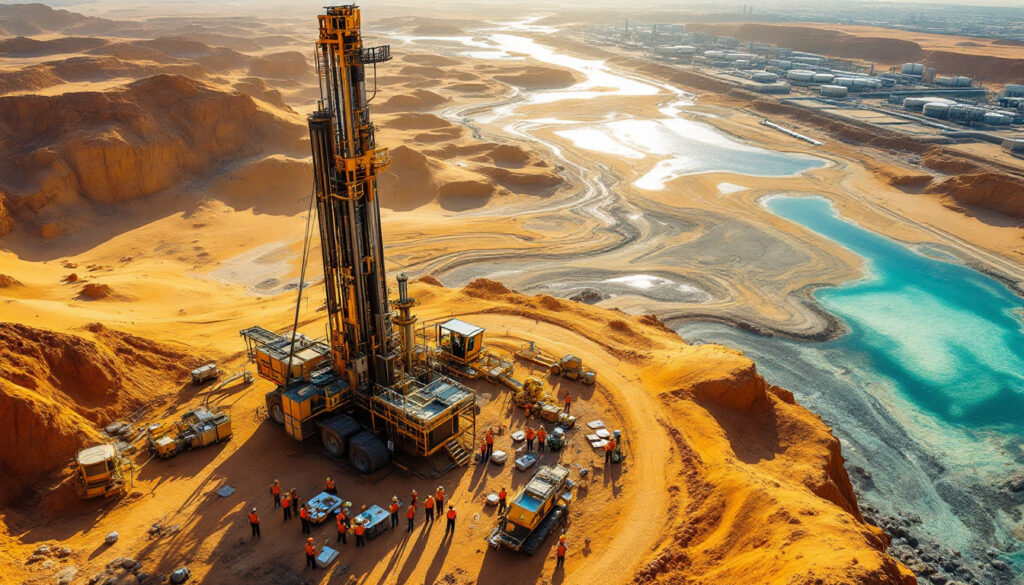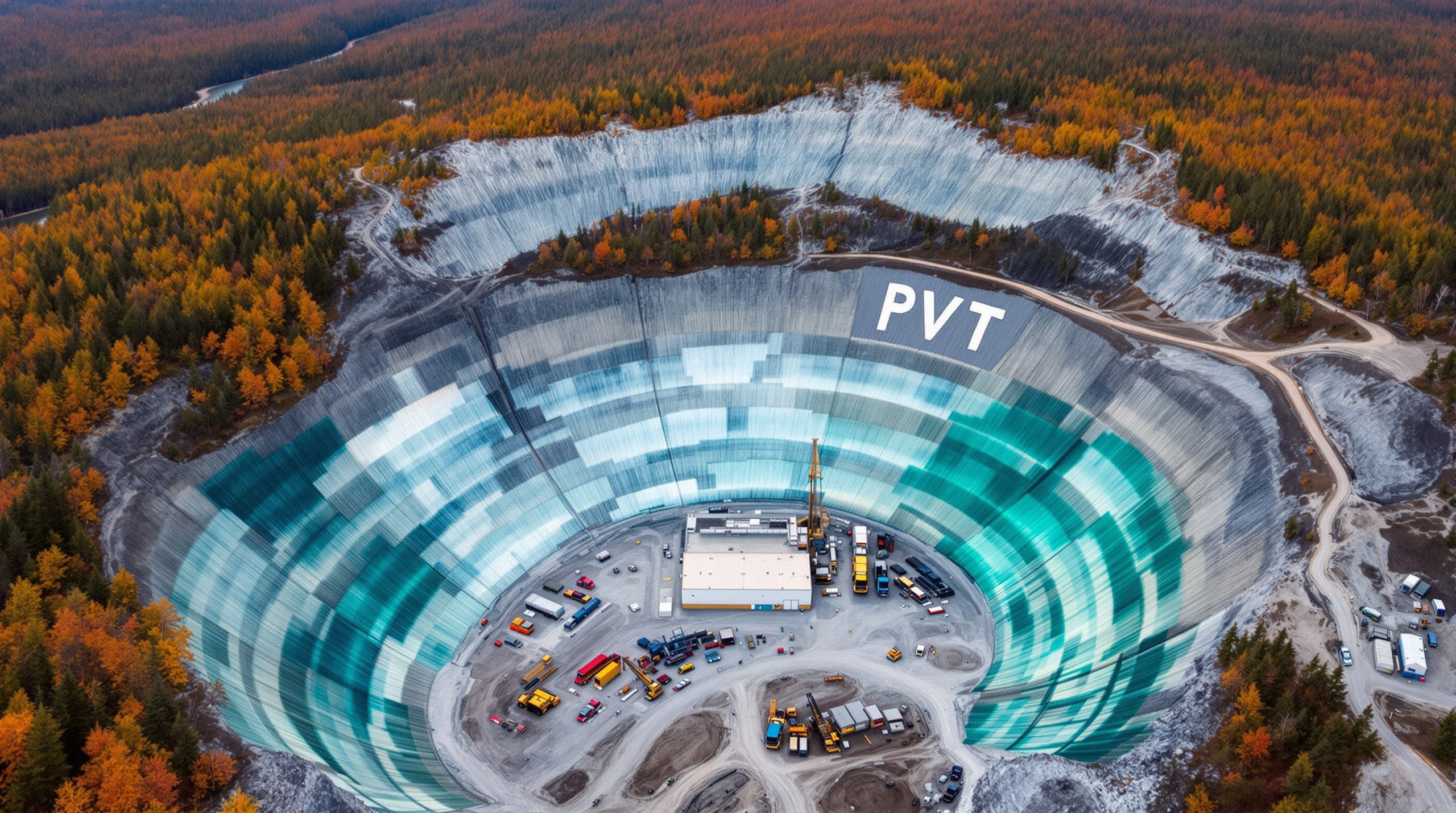Remarkable High-Grade Results Confirm Deposit Quality
Initial assays from 111 sonic drillholes (totaling 867 meters) at the Mpyupyu Dune deposit have delivered several standout high-grade intersections, including:
- 5.0m at 22.04% THM from surface, including 2.0m at 44.22% THM from surface
- 2.80m at 17.44% THM from surface, including 0.62m at 19.83% THM from surface
- 7.01m at 8.1% THM from surface, including 2.30m at 17.2% THM from surface
- 3.78m at 11.91% THM from surface, including 2.50m at 15.95% THM from surface
These results are particularly significant as they demonstrate higher THM grades than previously reported in the existing Inferred Mineral Resource estimate for the Mpyupyu deposit, which stands at 19.9Mt at 4.2% THM. Similar to Great Western Exploration's recent copper-gold discovery, these findings could significantly impact the company's future development plans.
"These are amongst the best intervals reported to date with very high-grade mineralisation, including 2.0m at 44.22% THM, in hole MPYSD208, from surface indicating the HM potential at Mpyupyu," said Managing Director Cadell Buss.
Understanding Mineral Sands: THM Explained
Total Heavy Minerals (THM) refers to the percentage of heavy minerals present in the sand. These heavy minerals typically include commercially valuable products like ilmenite (used in titanium dioxide production), rutile, and zircon. The higher the THM percentage, the richer the deposit and potentially more economical to mine.
The exceptional THM values in Chilwa Minerals high-grade mineral sands at Mpyupyu (up to 44.22%) represent extremely high grades by industry standards, where commercial operations often work with grades in the 2-6% THM range.
Mineral Sands Industry Context
Heavy mineral sands deposits form when minerals with high specific gravity (density) are concentrated by natural processes, typically along ancient or current coastlines. These minerals are generally more resistant to weathering and erosion than other minerals, and through natural sorting processes, they become concentrated in beach or dune environments.
The industry classifies heavy minerals as those with a specific gravity greater than 2.9, which allows them to be separated from lighter minerals using gravity-based processes. Key valuable heavy minerals include:
| Heavy Mineral | Primary Commercial Use | Typical Market Demand |
|---|---|---|
| Ilmenite | Titanium dioxide pigment production | High – used in paints, plastics, paper |
| Rutile | Titanium metal, titanium dioxide | High – aerospace, medical implants |
| Zircon | Ceramics, foundry, refractory applications | Steady – construction, consumer goods |
| Leucoxene | Titanium dioxide production | Moderate – specialty applications |
Strategic Deposit Configuration
The high-grade mineralisation at Mpyupyu appears to be concentrated in two sub-parallel lobate strandlines that strike approximately east-west. The Mpyupyu deposit has two distinct components:
| Deposit Section | Resource | Grade |
|---|---|---|
| Mpyupyu Dunes | 3.5Mt | 7.1% THM |
| Mpyupyu Flats | 16.4Mt | 3.6% THM |
| Total | 19.9Mt | 4.2% THM |
The current drilling program is validating and potentially upgrading these resource figures, with initial results suggesting the potential for higher overall grades than previously estimated.
Accelerating Development Timeline
Chilwa is making rapid progress across multiple fronts:
- Sonic drilling has been completed over 4km of strike at Mpyupyu Dunes, with 359 holes totaling 2,716 meters
- Drilling has moved to test northern shore deposits and the Bimbi deposit
- TZMI, a respected industry consultant, has been appointed to commence work on a Scoping Study
- The company expects to report new resource estimates within weeks, starting with the Mposa deposit
These developments indicate Chilwa is executing a well-structured exploration and development plan that could rapidly advance the project toward production decision points. Furthermore, this approach mirrors Vital Metals' strategy with their rare earth project, demonstrating a common pattern among successful resource companies.
"With the upgrades to the Mposa Deposit and resource, owing to the switch from Aircore to Sonic drilling, we have been keen to understand if this would carry over to other deposits within the project. This first set of results from Mpyupyu continues the trend in delivering thicker zones at higher grades, against the historic Inferred Mineral resource," noted Cadell Buss.
Investment Thesis: Why Chilwa Minerals Warrants Investor Attention
The Lake Chilwa Critical Minerals Project offers several compelling investment propositions:
-
Multiple high-grade deposits: The project comprises eleven HMS deposits, with Mpyupyu representing just one component of the overall resource base.
-
Superior drilling technique: The switch from aircore to sonic drilling is delivering consistently better results with "thicker zones at higher grades" compared to historical data.
-
Fast-track development potential: If the Scoping Study yields positive results, the company intends to move directly to the Feasibility Study phase for the Central Zone prospects.
-
Critical mineral exposure: Chilwa Minerals high-grade mineral sands project provides exposure to mineral sands that are essential inputs for various high-tech and industrial applications.
-
Relatively shallow, near-surface mineralisation: The high-grade intersections beginning at surface suggest favourable mining economics with minimal overburden.
Technical Advantages of Sonic Drilling
The company's use of sonic drilling technology appears to be delivering substantial benefits over the historical aircore drilling method. Sonic drilling utilises high-frequency vibrations to penetrate soil and rock while minimising disturbance to the surrounding material. This approach offers several advantages for mineral sands exploration:
-
Improved sample recovery: Sonic drilling typically achieves higher core recovery rates, resulting in more accurate grade estimation.
-
Better preservation of geological boundaries: The technique allows for clearer identification of different geological layers, which is crucial for accurate resource modelling.
-
Higher accuracy: The improved core recovery and preservation of geological boundaries lead to more robust geological deposit modelling and potentially higher reported grades.
The company reported that the sonic drilling program at Mpyupyu has achieved an average core recovery of 96.87% for the holes reported in the announcement, indicating excellent sample quality. This technical precision is reminiscent of Hammer Metals' EM conductor discovery, where advanced exploration techniques have yielded significant findings.
Chilwa Minerals High-Grade Mineral Sands Project Overview
The Lake Chilwa Project consists of eleven identified HMS deposits located around Lake Chilwa in southern Malawi. The project has an existing Inferred Mineral Resource of 61.6Mt at 3.9% THM, with individual deposits ranging from 1.9% to 7.1% THM.
The deposits are located on palaeostrandline deposits that formed through several cycles of lake level fluctuations. The main heavy mineral deposits occur along distinct strandlines where conditions of sediment supply, lake level, and hydrological factors were favourable for the formation and preservation of sand deposits.
Current exploration is focused on the Central Zone deposits, including Mposa, Mpyupyu, Bimbi and Namasalima, with further targets at Nkotamo, Beacon, Namanja West, and Bimbi Northeast still to be explored using sonic drilling.
Why Investors Should Follow Chilwa Minerals
Chilwa Minerals represents an emerging opportunity in the critical minerals space with several near-term catalysts:
- Pending assay results from the Bimbi deposit expected in coming weeks
- New resource estimates beginning with the Mposa deposit
- Completion of a Scoping Study that could define the economic parameters of the project
- Further exploration of additional historic resource areas
With consistently high-grade results from its drilling campaigns and rapid advancement toward economic studies, Chilwa Minerals is positioning itself as a significant player in the mineral sands industry with substantial upside potential as the project advances toward development. In the exploration sector, companies that confirm mineral presence, like Dart Mining's sulphide mineralisation and Nex Metals' gold targets at Yundamindra, often present compelling investment opportunities at an early stage.
Looking to Capitalise on the Next Major Mineral Discovery?
Discovery Alert's proprietary Discovery IQ model instantly alerts investors to significant ASX mineral discoveries like Chilwa Minerals' impressive results, turning complex data into actionable insights. Understand why historic discoveries can generate substantial returns by visiting the Discovery Alert discoveries page and begin your 30-day free trial today to position yourself ahead of the market.




